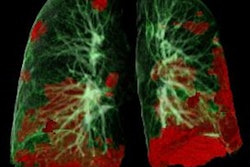To optimize dose, radiology departments need more consistent protocols for pediatric CT exams, according to a French study published online on 23 August in European Radiology.
Using data from six hospitals between 2010 and 2013, a team led by Dr. Neige Journy of the L'Institut de Radioprotection et de Sûreté Nucléaire in Fontenay-aux-Roses described CT scanning parameters, CT dose index volume (CTDIvol), and dose length product in pediatric practice and compared them with current diagnostic reference levels.
Journy's team calculated CTDIvol and dose length product for 4,300 studies, four age groups, and 18 protocols. Of the studies, 16.7% were in patients under one year, 26.8% in patients one to four years, 32.5% in patients five to nine years, and 24% in patients 10 to 14 years.
Although the researchers found that CTDIvol varied little with age for routine head scans and was lowest in children under 10 for chest or abdominal scans, there was protocol variability among radiology departments.
"Various degrees of individual variability within departments, with some of them using
protocol parameters for most patients, while in others scanning parameters largely varied from one patient to another one of same age, poses the question of how local protocols are applicable to specific clinical situations," the group wrote.



















